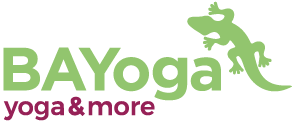What keeps me practicing yoga is a thought I have often had over the years. I practice ashtanga yoga which is the same sequence of movements each time I practice – why don’t I get bored? Isn’t it repetitive? Well, no it isn’t – why?
Everyday is different, some days my practice is free flowing, fluid, gentle and delicious. Then there are days when it can be hard, heavy and rigid. So whatmakes the difference each day? THE BREATH.
The breath is the link between the mind and body, when the breath is right the body flows and when it is not right the link is broken. When I am focused on my breath there’s a freedom in my movement and it seems seamless. Don’t get me wrong, my mind is quite likely to wander but on my ‘delicious’ days I bring it back to the breath quickly. The not so ‘delicious’ days it will undoubtedly take longer.
To gain a fluid practice we need to cultivate a deep even breath, one that is seamless and nurturing . Shallow breathing is not conducive to a fluid practice, it will make the practice harder. It may be that your daily life is extremely busy, with work, family, running from one thing to the other, stress etc and as a consequence your breath may be short and shallow, which then can become an unconscious habit of life. Through yoga and breathing deeply we can make our breath
conscious and through it gain more control of our lives and enjoy a fluid nurturing yoga practice.
So how do we cultivate this ‘fluid deep breath’? Practice, no magic, just practice, along with an understanding of how the breath works.
When the mind wanders you may also notice that the breath too has diminished in length and breadth. The ujjayi breath that we use in ashtanga, may also be on the
back burner of consciousness. So when you catch that distracted mind, come back to the breath and make the it louder than your thoughts – literally drown out the thoughts with the breath.
When I started yoga it was because I was an extremely stiff marathon runner and I needed to stretch. Now having gained some flexibility what keeps me coming back to the mat is my ‘moving meditation’ with the breath. Its a time when I can switch off from outside stimulation and be with myself, where I can really connect with the ‘real me’ as opposed the ‘me’ that is distracted by my mind. Shri K Pattabhi Jois, father of ashtanga yoga, often said “Breathe, all is coming”. In other words, by using your breath, you can find freedom in both body and mind.
In the Yoga sutras of Patanjali the breath is consistently mentioned as a way to calm the mind and is one of the 8 limbs of ashtanga yoga. Listen to your breath, what is is doing now? Is it calm, long and steady, or short, staccato and stressed? Whether you are on a yoga mat, watching TV, sitting at your desk you can always ncheck into your breath and from that, monitor how you are feeling.
Cathy (Ashtanga teacher and proprietor of BAYoga)

